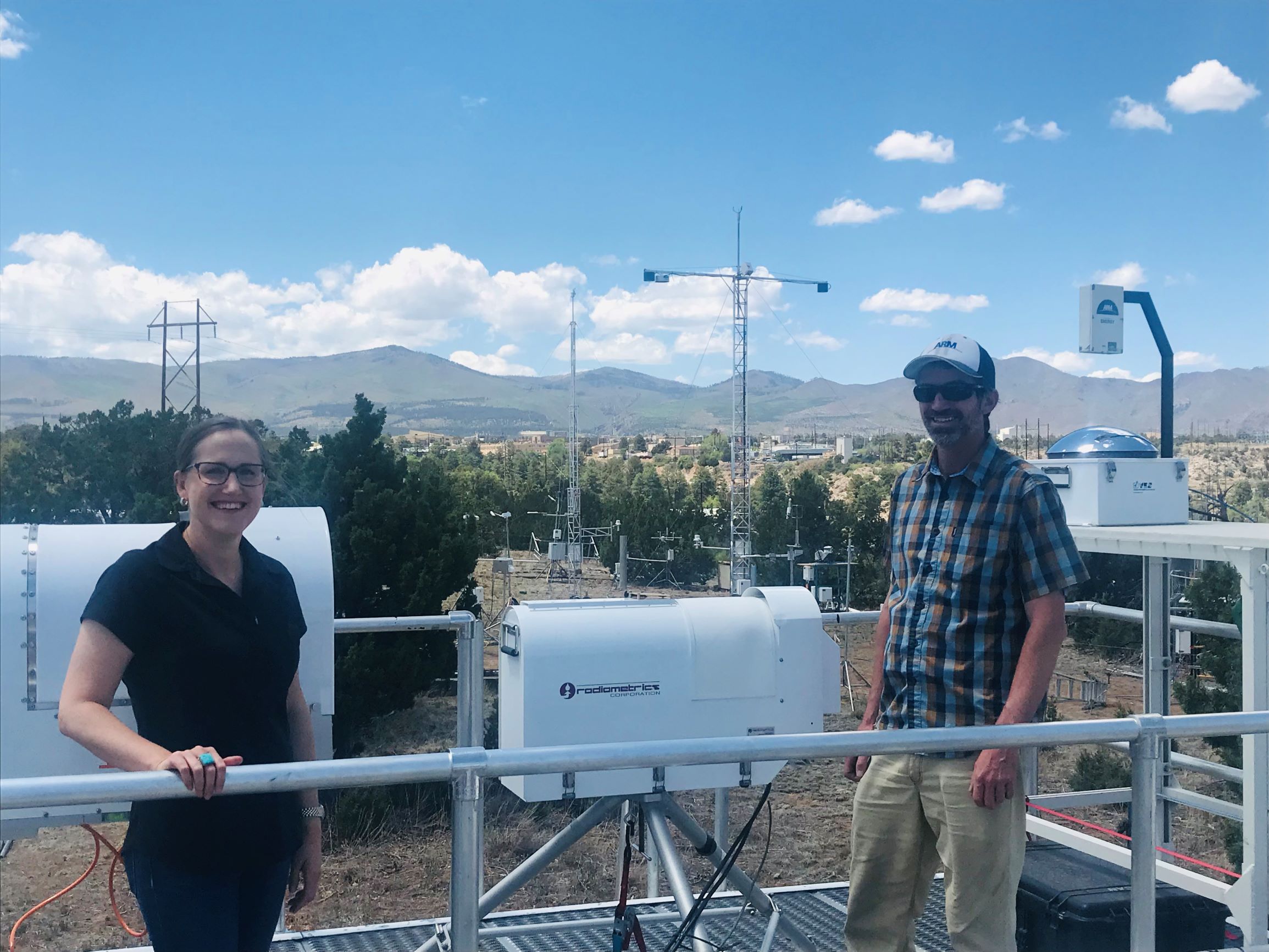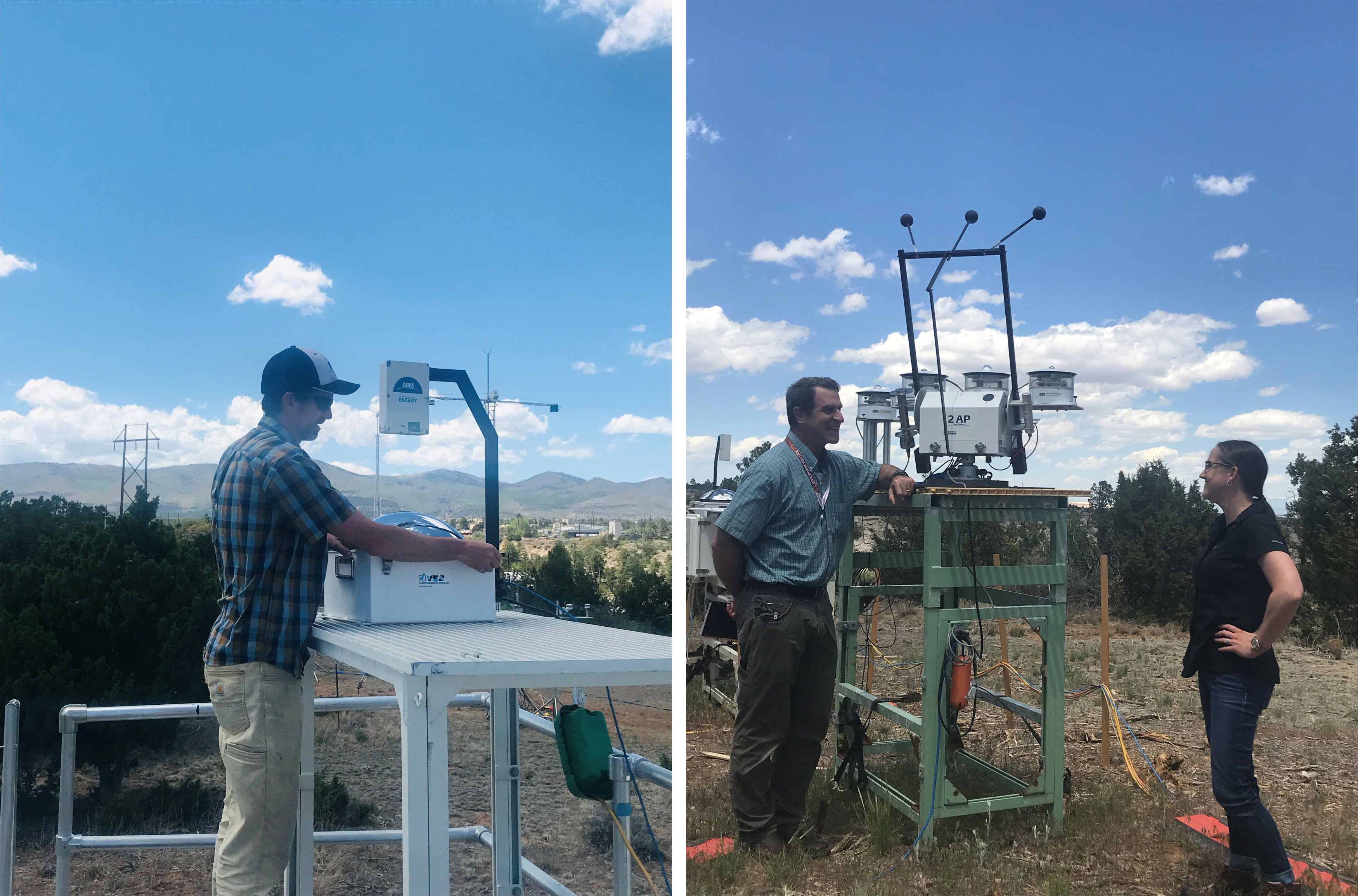Los Alamos Team Prepares to Launch 2 New ARM Mobile Campaigns
Published: 7 July 2021
After beta testing, SAIL site setup is underway in Colorado; TRACER installation coming up in Texas
Editor’s note: Kirsten Fox, communications and external affairs at Los Alamos National Laboratory in New Mexico, prepared this post.

The ARM team from Los Alamos National Laboratory, which supports deployments of the first and second ARM Mobile Facilities (AMF1 and AMF2), is preparing to launch two U.S. field campaigns.
In the Colorado Rockies near Crested Butte, AMF2 setup began June 21 for the Surface Atmosphere Integrated Field Laboratory (SAIL) campaign. Launching September 1, SAIL will collect data from the East River Watershed in the Upper Colorado River Basin. The Los Alamos team will oversee AMF2 operations during SAIL, which ends in June 2023.
Led by Daniel Feldman at Lawrence Berkeley National Laboratory in California, SAIL aims to develop a quantitative understanding of the atmosphere and land-atmosphere interaction processes, at their relevant scales, that affect mountain hydrology in the midlatitude continental interior of the United States.
Mountains capture, store, and distribute much of our water, but current earth system models are unable to predict the timing and availability of these water resources. Through SAIL, researchers will develop detailed measurements of mountainous water-cycle processes to better predict threats to water resources within the East River Watershed. The Colorado River supplies water for 40 million people and 5.5 million agricultural acres in multiple Western states.
SAIL is partnered with another U.S. Department of Energy (DOE) project in the Upper Colorado River Basin: the Watershed Function Scientific Focus Area (SFA), an ongoing multidisciplinary collaboration of researchers from dozens of institutions. Researchers will study the processes that influence water availability and quality as a result of earth system change.
SAIL will combine ARM atmospheric observations with surface and subsurface hydrologic observations from the Watershed Function SFA. The campaign will also use an X-band scanning radar from Colorado State University to measure the amount and type of precipitation.
Other collaborators include the Rocky Mountain Biological Laboratory, Crested Butte Mountain Resort, the U.S. Geological Survey, the Upper Gunnison Water Conservancy District, the National Center for Atmospheric Research, and NOAA.
In addition, the Los Alamos team is preparing to launch the TRacking Aerosol Convection interactions ExpeRiment (TRACER) for DOE in the Houston, Texas, area. TRACER will begin October 1 and run through September 2022. For the full year, AMF1 will operate at La Porte Municipal Airport southeast of downtown Houston.

Led by Michael Jensen at Brookhaven National Laboratory in New York, TRACER is a massive interagency campaign with nearly 20 guest campaigns. These efforts include scientists from Los Alamos, the National Science Foundation, NASA, and multiple universities (e.g., Colorado State, Baylor, Houston, Oklahoma, schools within the University of California system).
The ARM team at Los Alamos completed customized instrument beta testing for AMF1 and AMF2 with aerosol scientist Allison Aiken, a SAIL co-investigator and TRACER collaborator from Los Alamos.
After beginning the SAIL site setup in June, the Los Alamos team will start to install TRACER research sites in late July.
Keep up with the Atmospheric Observer
Updates on ARM news, events, and opportunities delivered to your inbox
ARM User Profile
ARM welcomes users from all institutions and nations. A free ARM user account is needed to access ARM data.


















